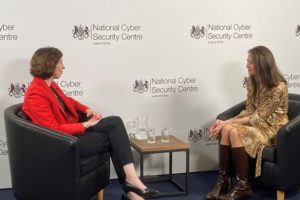UK and US cyber security leaders meet to discuss shared threats and opportunities

National Cyber Security Centre CEO and Director of the US Cybersecurity and Infrastructure Security Agency met in London.
Top cyber security officials from the UK and US affirmed their commitment to tackling ransomware in their first official face-to-face engagement.
Lindy Cameron, CEO of the National Cyber Security Centre – a part of GCHQ – met with Jen Easterly, Director of the Cybersecurity and Infrastructure Security Agency to discuss their organisations’ priorities, including combatting ransomware.
During their bi-lateral meeting in London they reflected on the impact of ransomware attacks this year and the need for industry collaboration to complement government’s operational efforts against ransomware.
NCSC Chief Executive Lindy Cameron said:
“It was a pleasure to host Director Easterly for our first in-person bi-lateral meeting to discuss the critical issues in cyber security today.
“Ransomware is a serious and growing security threat that cuts across borders, and it is important for us to maintain a continuing dialogue with our closest ally to tackle it.”
The issue of gender diversity was also on the agenda, with both agreeing that more needed to be done to remove barriers to entry into the profession for women and girls.
They discussed the NCSC’s CyberFirst Girls Competition, which aims to get more girls interested in cyber through fun but challenging team events for teenagers, and CISA’s ongoing commitment to expanding opportunities for young women and girls to pursue careers in cyber security and technology and closing the gender gap that exists in these fields.
The two leaders also discussed government collaboration with industry, including the NCSC’s Industry 100 scheme and CISA’s Joint Cyber Defense Collaborative.
The Industry 100 scheme has integrated public and private sector talent in the UK to pool their knowledge to tackle key cyber security issues. The Joint Cyber Defense Collaborative has similarly bought American public and private sector entities together to unify crisis action planning and defend against threats to U.S. critical infrastructure.

